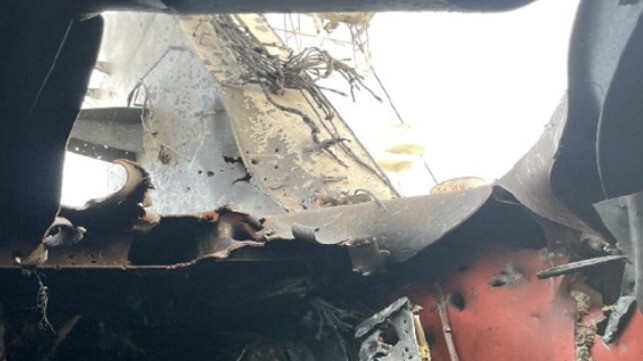Drones Pose a Threat to Maritime: Navigating the Rising Tide of Danger

The tranquil expanse of the open seas has long been a symbol of freedom and adventure. However, the vast oceans are no longer immune to the encroachment of modern threats. Vessels are already threatened by spoofing and jamming of navigation signals, disruption to communications, and pirates. Once considered relatively safe from emerging dangers, the maritime industry is now also increasingly threatened by unmanned aerial vehicles (UAVs) or drones. Drones were initially associated with innovation and convenience. They are now used as instruments of disruption and destruction.
One concern is armed drone attacks which have concerning safety implications. Back in 2021, an exploding drone killed two crew members on a merchant tanker, Mercer Street, off the coast of Oman. The attack was likely part of an ongoing maritime conflict between Israel and Iran. Drone attacks have also been used to target vessels and maritime infrastructure in the Russia-Ukraine conflict, including a marine drone which is a flat, arrowhead-shaped vessel packed with explosives.
Drones can also be used to disrupt communication networks. Attackers can use a drone to transmit a signal which drowns out a target’s communications, disrupting communication between vessels. US merchant vessels, both in the Ready Reserve Fleet and Military Sealift Command, rely heavily on commercial communication systems that are susceptible to interference. Global reliance on technologies makes ships susceptible to potential attacks and compromises their ability to communicate vital information in case of an emergency.
Drones are particularly threatening to the maritime industry when they are part of a swarm. Drone swarms are becoming prevalent in maritime operations, according to U.S. Coast Guard officer Lieutenant Commander Kristopher Thornburg. They consist of numerous small unmanned aerial systems (sUASs), and possess the capability to disrupt. Last year, the USS Dewey (DDG-105) was confronted by a swarm of 96 drones deployed by People’s Armed Forces Maritime Militia vessels in the South China Sea. These drones created concentric patterns around the ship and launched coordinated swooping attacks that threatened the vessel's safety.
Awareness of drone threats is crucial, but it is only the first step. To safeguard maritime operations, proactive measures are required. One approach is drone detection and neutralisation technologies. Reperion is a pioneering company in this field, and offers advanced drone detection solutions that can help identify potential threats in real-time, allowing ships to take evasive actions before an attack occurs.
Moreover, maritime stakeholders are looking to bolster resilience in communication systems, in order to mitigate potential disruption, partly caused by drones. Modernization of fleets and mariners, for instance in the US Ready Reserve Fleet, has become imperative. Director of maritime operations for the Military Sealift Command, Christopher Thayer, emphasises the importance of developing mobile communication systems and incorporating technologies that limit potential intrusions.
As the maritime industry grapples with the evolving challenges posed by drones, concerted efforts must be made to counter threats. Lessons learned from evolving tactics of drone swarms and vulnerabilities exposed by armed drone attacks should inform proactive measures. The maritime sector must invest in advanced detection technologies, bolster communication systems, and train crews to operate in contested environments. In this age of innovation, it is essential to recognize the dual nature of technology, its power to both empower and threaten, and take steps to protect against threats.
Jessie Hamill-Stewart is a cybersecurity PhD student at University of Bristol and University of Bath.
Andrew Sallay is the CEO and co-founder of cybersecurity company Reperion.
The opinions expressed herein are the author's and not necessarily those of The Maritime Executive.
